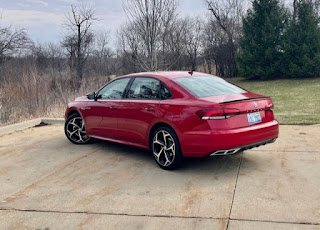Please Stop Using CVT Transmissions!
A friend of mine has a 2016 Subaru Legacy 3.6R. It’s a very safe car, has a good interior, and a rather weak engine. Oh, it also has a CVT or continuously variable transmission. When I talked with him while he took me for a spin, he told me he doesn’t mind the CVT and it is smooth for his Lyft passengers. While being a passenger in his car, the CVT did act like a conventional transmission, although it did dip in the rev range lower than usual. Then he floored it. Drone. It stayed at 3,000 RPM for at least five minutes. It was extremely annoying, but not surprising. Let me explain how a CVT works, and how I think manufacturers need to stop using them.
Nerd moment approaching. You will learn many facts and you are welcome. As a surprise, a CVT is an automatic transmission. Manufacturers use this to improve fuel economy. What isn’t surprising is how they work. Instead of using traditional gears, a CVT uses a combination of pullies that are connected by a belt and “steps”. Steps are artificial gears which are preset and made so buyers feel like they’re getting a conventional transmission. Some CVTs, especially in hybrids, tend to not have steps to maximize fuel economy. They are less compared to traditional transmissions, even 10-speed automatics, but manufacturers think they are worth it. Are they?
I do have to point out the positives, no matter how much I dislike this transmission. They can be smooth. Since there is no actual shifting, when a CVT wants to behave, acceleration can feel less jerky compared to a traditional transmission. CVTs have infinite ratios, so they can find the right…ratio…to assist not only with seamless power. They do help with fuel economy which is part of the reason why most Toyota hybrids have forgone the traditional automatic transmission in favor of the CVT.
Positive points over, let’s shift to what I hate about the CVT. First, You won’t find a CVT in a powerful car over 300 HP. They just can’t handle all that power! Like I said in the first paragraph, they can drone and be almost obnoxiously loud. I once drove a Honda Accord Hybrid in Colorado, and it decided to stick to 4,000 RPM at 60 mph. For 2 hours. Needless to say, the average sounding sound system was necessary to drown out the noise. My biggest issue with any CVT is that it robs the driver of spirited and fun driving. I have never driven a CVT, gotten out of the car, and said “Wow, this was really fun. I’m glad that this engine and transmission combination exist.”
Now, which companies are the biggest culprits? Japanese companies. Toyota, Nissan, Subaru, and Honda all use CVTs in mostly all their vehicles, and in all of their hybrids. A few other companies such as Audi will use a CVT in their cheaper models, but most of their cars use dual-clutch automatics or traditional automatics. A disappointment of a vehicle created with a CVT is the Infiniti QX50. It is a handsome looking vehicle with a unique turbocharged engine and…a CVT. Basically, it’s ruined because of the CVT.
I understand why manufacturers use CVTs due to how smooth it can be along with the increase in MPG, but they just seem to ruin the cars. I don’t understand why they can’t use dual-clutch automated manual or 8-10 speed automatics? These transmissions are getting better all the time. Manufacturers, stop with the CVTs! They are not necessary! Just use regular transmissions! They can return similar MPG, drive smooth, and won’t stick to 4,000 RPM for 2 hours while in Colorado. I can safely say that I hate the CVT, and I think that I’m not the only one.
Have you driven a vehicle with a CVT and either liked or disliked it? Did you decide not to buy a vehicle with a CVT or were you sold on the two benefits it has? Let us know in the comments below and follow us on social media.




Comments
Post a Comment